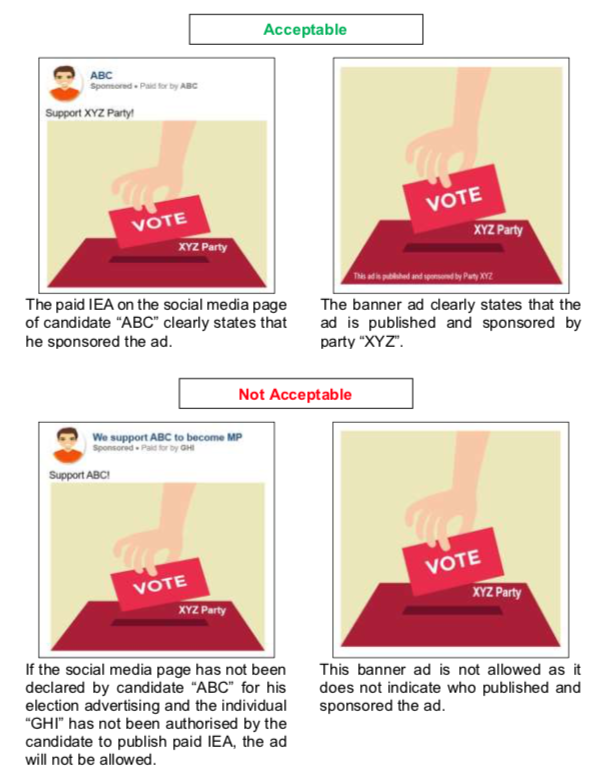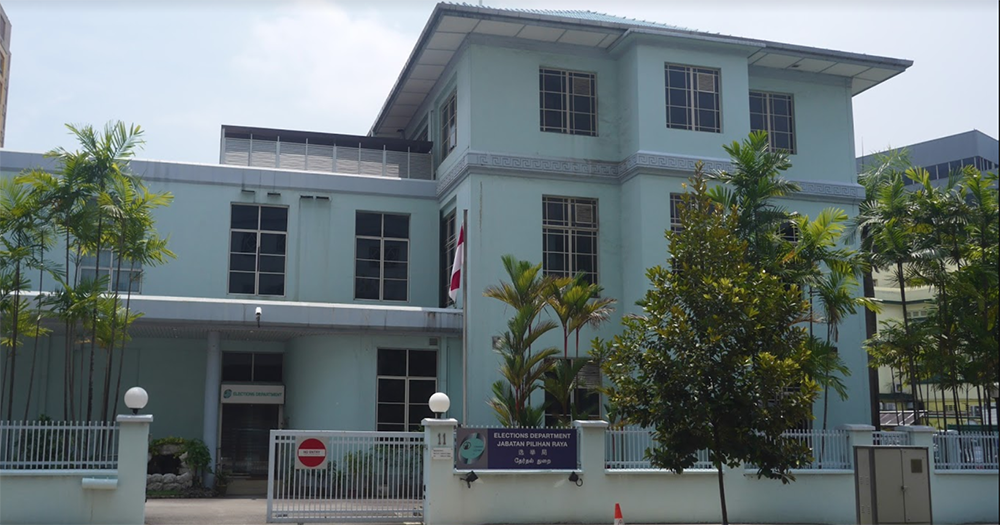The Singapore Elections Department (ELD) will "try to announce the guidelines on [physical] campaigning as early as possible", it said in a press briefing today (June 8).
However, more time is needed for these guidelines, as ELD said that it was still "working through the scenarios" that might arise depending on how the Covid-19 situation develops here.
In the meantime, political parties and candidates can refer to new and updated rules, including rules on campaigning in the online space, which ELD announced on June 8.
These rules cover areas such as paid Internet Election Advertising, as well as election posters and banners, and would apply "regardless of the Covid-19 situation", ELD said.
"Enough time" will be given for preparations: ELD
ELD was not able to provide an estimated timeframe for the release of the campaigning rules.
This is because the date of elections remains unknown.
However, it said that the rules on campaigning would not come later than the day that the writ of elections is issued.
"Certainly, it will not be later than the day of the writ [of elections], so that will still give enough time for candidates of political parties to plan their campaigning strategies."
Guidelines on campaigning will depend on Covid-19 situation
ELD said that campaigning guidelines would depend on prevailing MOH guidelines on safe distancing and safe management
These guidelines would cover questions on whether physical rallies, walkabouts and house-to-house visits can continue.
However, ELD said that if large group activities were restricted by the prevailing health advisories, it would "ensure that voters have access to the campaigning messages of all political parties and candidates".
This could possibly include catering for "additional TV broadcast time" for candidates and political parties.
Releasing campaigning guidelines when writ issued is "worst case scenario"
ELD said that in a "worst case scenario", the campaigning guidelines will only be announced when the writ of election is issued.
Nomination day, which marks the start of the campaigning period, is usually scheduled one week after the writ of election is issued, although it can be any time between five days and one month later, according to Section 24(2) of the Parliamentary Elections Act (PEA).
Calls for clarity by political parties
Political parties had previously called on the government to clarify the rules that would apply to the upcoming General Election.
This came after Deputy Prime Minister (DPM) Heng Swee Keat, said in an interview with CNA on May 27 that it would be better for a general election in Singapore to be held as soon as possible.
Rules on paid Internet Election Advertising
ELD said that the relevant subsidiary legislation has been updated to include new rules on paid Internet Election Advertising (IEA).
What is IEA? IEA can come in the form of social media sponsored posts, website banners, or advertorial content. It can also take the form of material from the internet which is delivered to mobile devices via email or instant messaging.
Who can pay for IEA? Only a candidate, political party, or a third party campaigner who has been authorised by the candidate can pay for IEA. They must also keep to campaign spending limits.
Can non-candidates publish IEA? Non-candidates, as well as those not authorised by candidates can still publish IEA, though they are not allowed to pay for it.
More detailed disclosure requirements
The amended rules impose more detailed disclosure requirements for paid IEA, requiring those responsible for the use of paid IEA to declare to the Returning Officer the following details:
- Type of services used
- Time period in which the paid IEA will appear
- Publisher of the paid IEA
- Whether money was received for the placement of the paid IEA
The declarations must be made within 12 hours of the start of the campaign period.
Previously, the declaration only required candidates to state the platforms that they were using for IEA, and to subsequently declare any additional new platforms before using them.
Requirement for IEA to state who paid for it
Existing rules require that all election advertising must contain:
- the name of the publisher, and,
- the name of every person for whom, or at whose direction the election advertising is published.
In addition to this, there is now a requirement that paid IEA must state that it was paid for by the candidate, political party, or a third party campaigner who has been authorised by the candidate.
This can be done using words such as "sponsored by" or "paid for by" on the IEA.
 Illustrations of acceptable and unacceptable paid IEA. Image via Singapore Elections Department.
Illustrations of acceptable and unacceptable paid IEA. Image via Singapore Elections Department.
Requirement to state the amount spent on IEA
Candidates will also now be required to state the amount that they spent on IEA.
Paid IEA has been added to the form as a new sub-category of expenses in the election expenses returns form.
The previous version of the form did not differentiate between print and non-print election advertising.
Rules on election posters and banners
ELD also announced updates to rules on election posters and banners, as follows:
- New requirement for symbols: There is a new requirement for candidates to include the symbols allotted to them by the Returning Officer on election posters or banners, so that it is clear to voters who the poster or banner is for.
- More large banners allowed: Candidates will now be allowed to display more large printed election advertising (i.e. posters or banners up to 9m by 1.2m in size) than before. One large printed election advertising is allowed for every 4,000 electors, instead of one for every 5,000 electors.
- Political parties may lodge advertising on candidates' behalf: Political parties may lodge the same election poster/banner for display across different constituencies on their candidates’ behalf. Candidates were previously required to lodge a copy individually.
- Change in maximum size of banners allowed: The maximum size of small posters and banners for Single Member Constituencies (SMCs) has been increased to 1.75m by 1.2m, to match the size allowed in Group Representation Constituencies (GRCs).
- Requirement for candidates to pay for removal of advertising in breach of rules: Candidates will be required to pay S$50 for the removal of election posters or banners which are in breach of the rules. ELD said that this was "based on cost recovery", and will have to be declared as part of the candidates' election expenses.
Items not treated as election advertising
ELD is also updating the list of items which will not be treated as election advertising, to include:
- Umbrellas
- Portable objects or articles of value less than S$10, and of volume less than 10cm x 10cm x 10cm
A list of items "generally of small value and small in size" are exempted from the definition of "election advertising" because they are too small to publish the names of the printer, publisher, and person directing the item's production, ELD said.
These items must, however, not contain content that is false, or negative towards other candidates.
Indication on timing of upcoming general election
In the May 27 interview, Heng said an election ought to happen soon, as "the earlier we can rally everybody together to deal with these very significant challenges ahead, and also to deal with these very significant uncertainties in the months and years ahead", the better to prepare Singapore for the future.
Political analysts have said that the most likely slot for a GE to happen appears to be in mid or end-July.
Contingency plans for polling day
On June 8, ELD also announced contingency plans for safety measures on polling day, which you can read about here:
Top photo by Alex Ortega via Google Maps
If you like what you read, follow us on Facebook, Instagram, Twitter and Telegram to get the latest updates.
